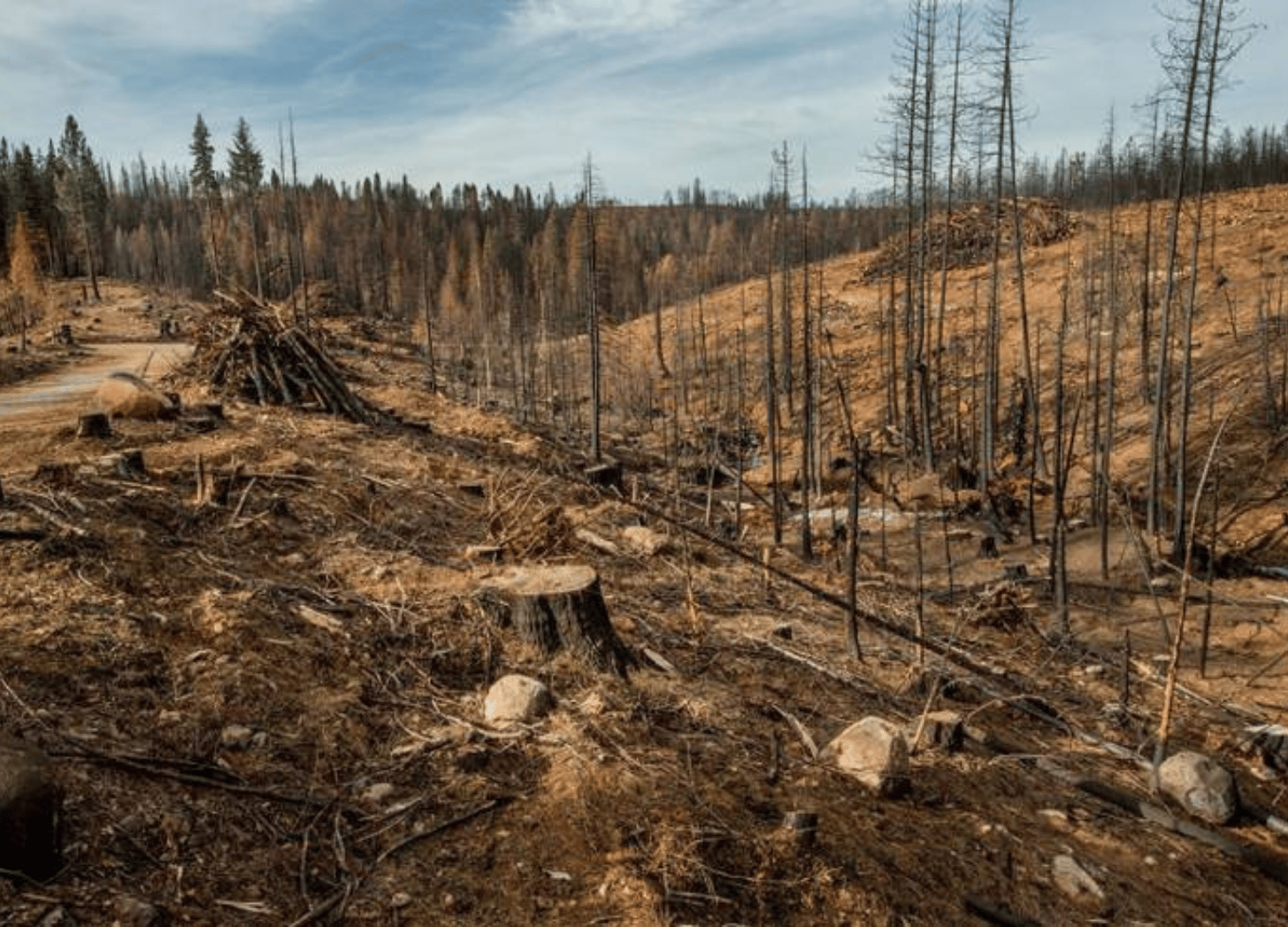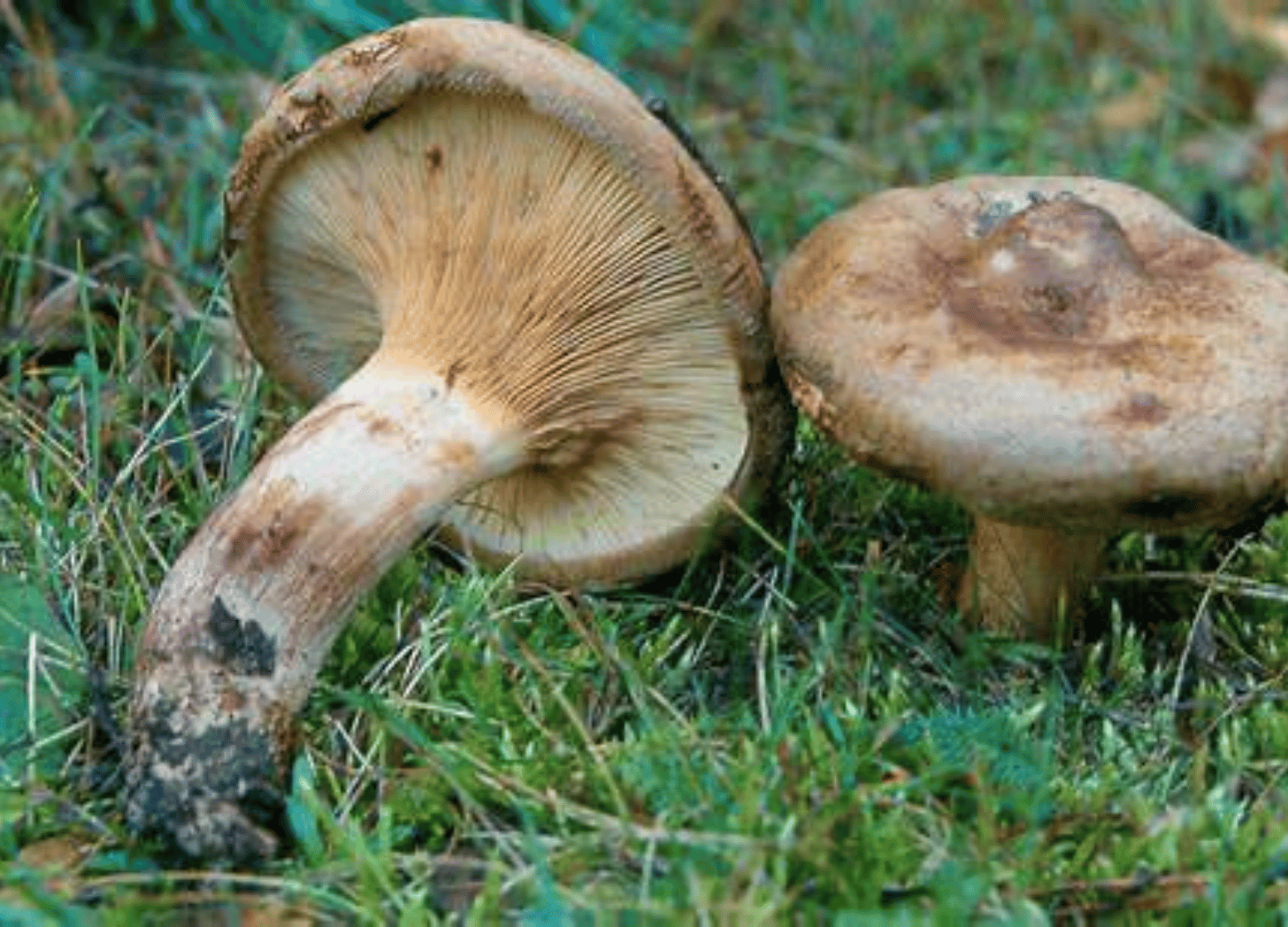Spore Signals: What Mushrooms Reveal About Our Planet’s Health
By observing the diversity, dominance, and conditions of certain mushroom species, we can detect early signs of pollution, habitat degradation, and climate change.
To the untrained eye, a forest in decline can look identical to a healthy forest (for a while, at least).
However, nature gives us signs when something isn’t quite right or when life is flourishing.
"Bioindicators" are species that can provide unique insight into the health status of the environments in which they live.
These organisms can be used to assess the quality of an ecosystem and tell a tale of what’s going on behind the scenes.
Often, bioindicators provide early warning signs that something is unbalanced or out of control in an ecosystem. They can be used to take action and improve biomes before it’s too late…
Here, we’ll explore fungal bioindicators — mushrooms to look for on your next walk through the park that can provide detailed insight into the health and stability of the natural landscape.
Fungi That Indicate Air Pollution
Lichens are a composite organism formed by the symbiotic relationship of a fungus and a photosynthetic partner (an algae or cyanobacteria). Lichens can tell us a lot about our environment. They’re highly sensitive to changes in air quality, making them excellent bioindicators of air pollution.
It’s easy to use lichens to assess air quality.
By searching for three different types of lichens, you can quickly discover whether the air quality is “poor, average, or excellent” in your area.
A) Flat Lichens (Poor Air Quality)
The presence of “flat” lichen species, such as those from the Physcia genus, typically indicate poor air quality, although they will also grow alongside more sensitive lichens in clean environments.
What you're looking for are areas where this fungus is clearly the dominant species.
These lichens are more tolerant to pollutants like sulfur dioxide and nitrogen oxides. If they dominate a particular area and other lichens aren’t present, you can assume the air pollution levels are high. You’ll find them growing on rocks, walls, and sidewalks in many cities and towns.
B) Fluffy Lichens (Average Air Quality)
“Fluffy” lichens, such as those from the Evernia genus, indicate average air quality.
These species are less tolerant to air pollutants than flat lichens but can still grow in moderately polluted environments. They can be found in nature close to towns that are low to moderately populated.
C) Stringy Lichens (Excellent Air Quality)
The presence of “stringy” lichens, such as those from the Usnea genus, indicates exceptional air quality.
These lichens are highly sensitive to air pollution and can only thrive in clean environments. Their presence indicates low levels of air pollutants and good atmospheric conditions.
You’re likely to find these lichens in the wilderness, far away from cities and towns.
Mushrooms That Indicate Soil Health
Mushrooms (the fruiting body of a fungus) can be excellent indicators of soil health. Different mushroom species require unique environmental conditions, and their dominance (or absence) can reveal a lot about soil quality.
A) Mycorrhizal Fungi (Good Soil Health)
Mycorrhizal mushrooms, such as those from the Boletus, Cantharellus, and Amanita genera, form symbiotic relationships with tree roots.
Their presence can (but not always) indicate healthy soil with good nutrient cycling. The presence of these mushrooms also indicates good forest health, as these relationships only form in balanced ecosystems.
B) Saprotrophic Fungi (Good Soil Health)
Mushrooms such as those in the Agaricus, Morchella, and Hericium genera decompose organic matter. They play a vital role in nutrient recycling, decomposing dead wood, and other organics to enrich the soil with nutrients.
A diverse population of saprotrophic fungi suggests a robust and balanced ecosystem with a healthy life cycle.
C) Resilient Bioaccumulators (Poor Soil Health)
An abundance of certain mushroom species, such as Paxillus involutus, may indicate environmental stress, soil contamination, and poor soil diversity. These mushrooms are known bioaccumulators, which means they absorb heavy metals and other pollutants from the soil.
These mushrooms can survive in heavily polluted areas. Although their presence alone doesn’t signal poor soil health, if the majority of the fungal biomass is made up of these species, it may indicate the presence of pollutants in the soil.
Fungi That Warn Of Ecosystem Decline
The abundance of certain types of mushrooms can indicate ecosystem decline. Dying forests, grasslands, and heathlands show signs of sickness everywhere. You just need to look and observe which types of fungi are dominating the landscape…
A) Polypore Fungi
Certain polypore mushrooms, such as those in the Ganoderma genus, grow on dead and dying trees. These mushrooms are part of the natural cycle of the forest. However, an abundance of these fungi and the lack of bioindicators signaling a healthy ecosystem is a sign that the forest could be stressed, diseased, or dying.
B) Pathogenic Fungi
Pathogenic mushrooms such as those in the genus Armillaria are essentially “pathogens” that infect and kill trees.
Healthy forest ecosystems have natural defenses against these fungi, and only sick, dying trees succumb to their wrath.
The presence of pathogenic mushrooms is normal, but if a large number of trees in an area are affected, it could be an indication that the ecosystem has fallen ill.
You Can Learn A Lot About The Health Of The Environment From Mushrooms & Other Fungi
The next time you head out for a stroll in your local park, forest, or woodland, keep an eye out for lichens and mushrooms.
Will you find indicators of poor or excellent air quality? Is the forest in your area richly diverse or plagued with pathogenic fungi?
Let us know what you see the next time you head out for a walk in the comments below…
Further Reading
If you’re keen to learn more about mushrooms, nature, and what your environment can teach you, check out these articles:
Forest Feed: How Trees Like, Share, & Communicate Through Mycelial Networks
Shroom Science: Understanding the Differences Between Psilocybin & Psilocin
Where Do Shrooms Grow? How to Find Magic Mushrooms in the Wild
Enjoying the Trip? 🍄
Don’t Journey Alone! Tripsitter was built by a community of psychedelic advocates — but it’s people like you that allow us to thrive.











